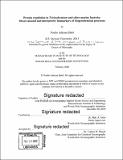| dc.contributor.advisor | Mak. A. Saito. | en_US |
| dc.contributor.author | Held, Noelle Adriana. | en_US |
| dc.contributor.other | Joint Program in Oceanography/Applied Ocean Science and Engineering. | en_US |
| dc.contributor.other | Massachusetts Institute of Technology. Department of Earth, Atmospheric, and Planetary Sciences. | en_US |
| dc.contributor.other | Woods Hole Oceanographic Institution. | en_US |
| dc.date.accessioned | 2020-10-18T21:43:01Z | |
| dc.date.available | 2020-10-18T21:43:01Z | |
| dc.date.issued | 2020 | en_US |
| dc.identifier.uri | https://hdl.handle.net/1721.1/128076 | |
| dc.description | Thesis: Ph. D., Joint Program in Oceanography/Applied Ocean Science and Engineering (Massachusetts Institute of Technology, Department of Earth, Atmospheric, and Planetary Sciences; and the Woods Hole Oceanographic Institution), 2020 | en_US |
| dc.description | Cataloged from PDF of thesis. "February 2020." | en_US |
| dc.description | Includes bibliographical references. | en_US |
| dc.description.abstract | Marine microbes play key roles in global biogeochemistry by mediating chemical transformations and linking nutrient cycles to one another. A major goal in oceanography is to predict the activity of marine microbes across disparate ocean ecosystems. Towards this end, molecular biomarkers are important tools in chemical oceanography because they allow for both the observation and interpretation of microbial behavior. In this thesis, I use molecular biomarkers to develop a holistic, systems biology approach to the study of marine microbes. I begin by identifying unique patterns in the biochemical sensory systems of marine bacteria and suggest that these represent a specific adaptation to the marine environment. Building from this, I focus on the prevalent marine nitrogen fixer Trichodesmium, whose activity affects global nitrogen, carbon, phosphorus, and trace metal cycles. | en_US |
| dc.description.abstract | A metaproteomic survey of Trichodesmium populations identified simultaneous iron and phosphate co-stress throughout the tropical and subtropical oceans, demonstrating that this is caused by the biophysical limits of membrane space and nutrient diffusion. Tackling the problem at a smaller scale, I investigated the metaproteomes of individual Trichodesmium colonies captured from a single field site, and identified significant variability related to iron acquisition from mineral particles. Next, I investigated diel proteomes of cultured Trichodesmium erythraeum sp. IMS101 to highlight its physiological complexity and understand how and why nitrogen fixation occurs in the day, despite the incompatibly of the nitrogenase enzyme with oxygen produced in photosynthesis. This thesis develops a fundamental understanding of how Trichodesmium and other organisms affect, and are affected by, their surroundings. | en_US |
| dc.description.abstract | It indicates that a reductionist approach in which environmental drivers are considered independently may not capture the full complexity of microbechemistry interactions. Future work can focus on benchmarking and calibration of the protein biomarkers identified here, as well as continued connection of systems biology frameworks to the study of ocean chemistry. | en_US |
| dc.description.statementofresponsibility | by Noelle Adriana Held. | en_US |
| dc.format.extent | 187 pages | en_US |
| dc.language.iso | eng | en_US |
| dc.publisher | Massachusetts Institute of Technology | en_US |
| dc.rights | MIT theses may be protected by copyright. Please reuse MIT thesis content according to the MIT Libraries Permissions Policy, which is available through the URL provided. | en_US |
| dc.rights.uri | http://dspace.mit.edu/handle/1721.1/7582 | en_US |
| dc.subject | Joint Program in Oceanography/Applied Ocean Science and Engineering. | en_US |
| dc.subject | Earth, Atmospheric, and Planetary Sciences. | en_US |
| dc.subject | Woods Hole Oceanographic Institution. | en_US |
| dc.title | Protein regulation in Trichodesmium and other marine bacteria : observational and interpretive biomarkers of biogeochemical processes | en_US |
| dc.title.alternative | Observational and interpretive biomarkers of biogeochemical processes | en_US |
| dc.type | Thesis | en_US |
| dc.description.degree | Ph. D. | en_US |
| dc.contributor.department | Joint Program in Oceanography/Applied Ocean Science and Engineering | en_US |
| dc.contributor.department | Massachusetts Institute of Technology. Department of Earth, Atmospheric, and Planetary Sciences | en_US |
| dc.contributor.department | Woods Hole Oceanographic Institution | en_US |
| dc.identifier.oclc | 1199217297 | en_US |
| dc.description.collection | Ph.D. Joint Program in Oceanography/Applied Ocean Science and Engineering (Massachusetts Institute of Technology, Department of Earth, Atmospheric, and Planetary Sciences; and the Woods Hole Oceanographic Institution) | en_US |
| dspace.imported | 2020-10-18T21:42:58Z | en_US |
| mit.thesis.degree | Doctoral | en_US |
| mit.thesis.department | EAPS | en_US |
